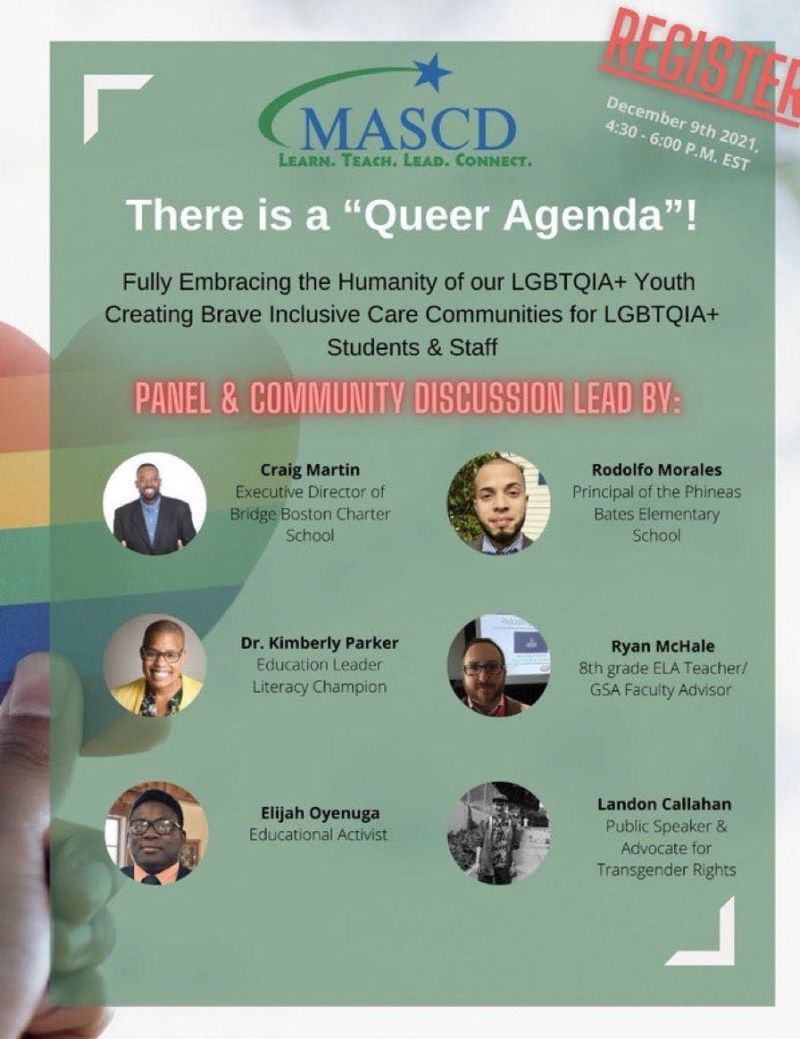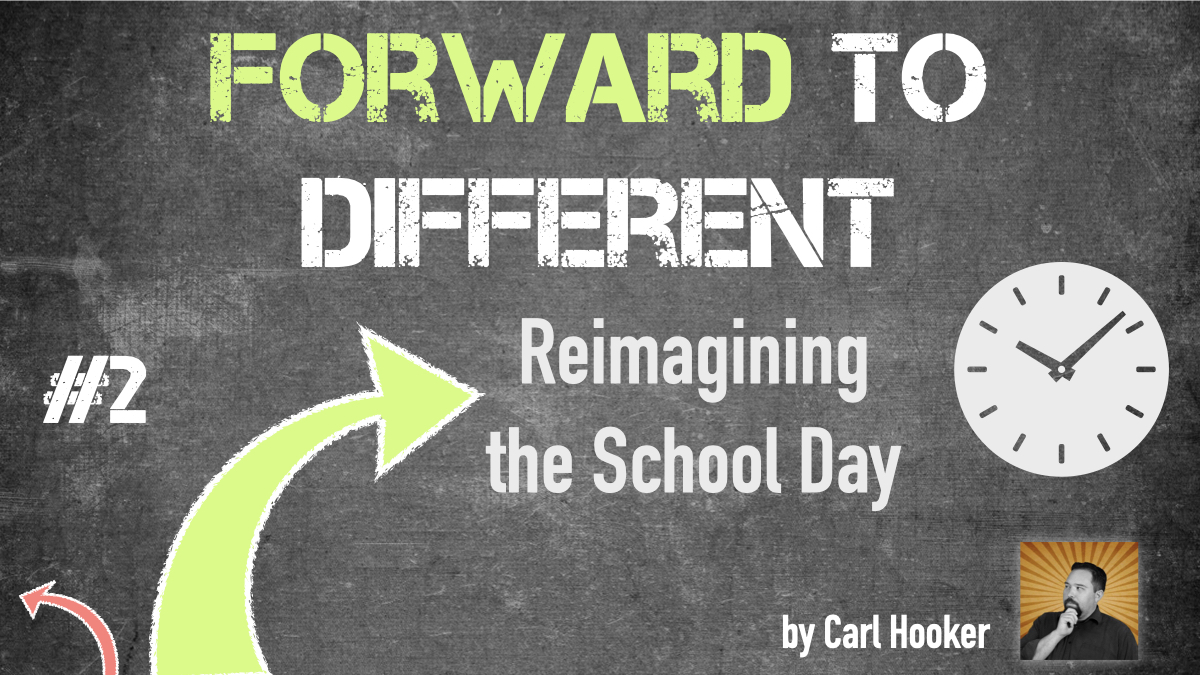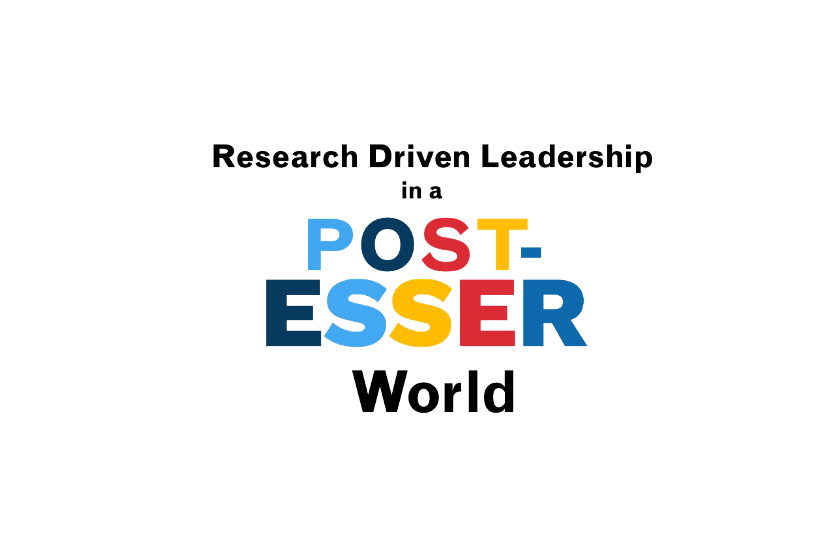Standing in the Gap: Responding to Intolerance and Committing to Safe Schools

Just days after a student was harassed by an adult for openly identifying as gay during a school board meeting in Massachusetts, the MASCD (Massachusetts Association for Supervision and Curriculum Development) had an organized response to the incident. Gathering dozens of educators and advocates from across the Commonwealth into a webinar to discuss and work-through how individual educators can support LGBTQIA youth, MASCD demonstrated how to respond swiftly, appropriately, and effectively to help make sure educators have the resources they need to encourage a safe environment in schools.
“If I didn’t define myself for myself, I would be crunched into other people’s fantasies for me and eaten alive.”
Audre Lorde
Here are some numbers that help paint a vivid picture beyond that single school-board meeting:
- 32% of high school students who identify as LGBTQIA have attempted suicide.
- 52% of LGBTQIA youth have been subject to serious bullying.
- 13.7% of LGBTQIA students have witnessed an adult intervening on their behalf.
Let’s read those backwards…
- 13.7% of LGBTQIA students have witnessed an adult intervene during bullying.
- 52% have been bullied.
- 32% attempt suicide.
And what is the Queer Agenda in schools? Because this panel admits there is one. And it’s simple. “Embrace all our students, and make all LGBTQIA students and staff feel safe in their communities of learning.”
One presenter, who identified as an “ally,” put his situation this way, “I don’t understand their life, but I know I need to be standing in the gap to support the young people who need me!”
And that “gap” is easy to define as well: 100%-13%= 87%.
That “gap” is to make sure 100% of students recognize that there are adults standing up for them, valuing them, and committed to providing a safe learning environment.
And how can an educator fill that gap, especially in an environment that can politicize student safety so quickly? The panel offered some really simple, and inspiring, suggestions.
And at the top of the list, the most enabling tool of any that was mentioned, was something very simple. Simply say you care about student safety. Safety for all your students. If that’s not part of your school’s mission, it can be part of your own. Owning that value empowers decisions that might otherwise be distracted by politics, or frenzy. And if you truly do value safety for all students (and staff), then demonstrate that by
- If your school’s mission doesn’t already include something to indicate your commitment to student safety, welcomed, and included. That lays the groundwork for conversations around what that looks like…
- Understand that when you do this work, you’re doing it for all your students.
- Look at the language you use… is it fully inclusive?
- Normalize all kinds of families.
- Think about where students see themselves represented in classroom materials, and make sure teachers can get that material into their classrooms. It’s not enough for it to just be on a shelf. It needs to be actively incorporated.
- Listen to families that don’t agree, but don’t allow that to negate the identities of your students.
- Identify your fears… “what is it I’m actually scared of if I commit to this more actively.” Then, if you are afraid, you can to ask the question “is this worth it.” Which comes back to your mission… If it’s in your mission, then yes- it is worth it.
- “Lean in” to your discomfort. It’s okay. Progress is not comfortable.
- Don’t expect students to initiate leadership, but empower and welcome them to. This is life-or-death important. 32% of LGBTQIA students attempt suicide.
- Sometimes it’s important to understand how you’re seen first… It’s okay to rely on friends’ and allies’ more privileged voices if that’s what needs to happen.
- If your community seems to value its homogenous culture, remember: We are not preparing students to stay in their own zip code. The rest of the world is infinitely more diverse than many of our communities.
- Do not assume that no one in your school is wrestling with these issues.
- Do not just share stories about persecution and suffering. Understand there is joy ahead for your students!
And I think that last point is particularly important. This webinar was initiated by an instance of conflict. And there is plenty of conflict. But as one of the presenters said, “This is a joyful community! Represent that for your students, not just the suffering.”
Recommend0 recommendationsPublished in Diversity, Leadership Voices






Responses